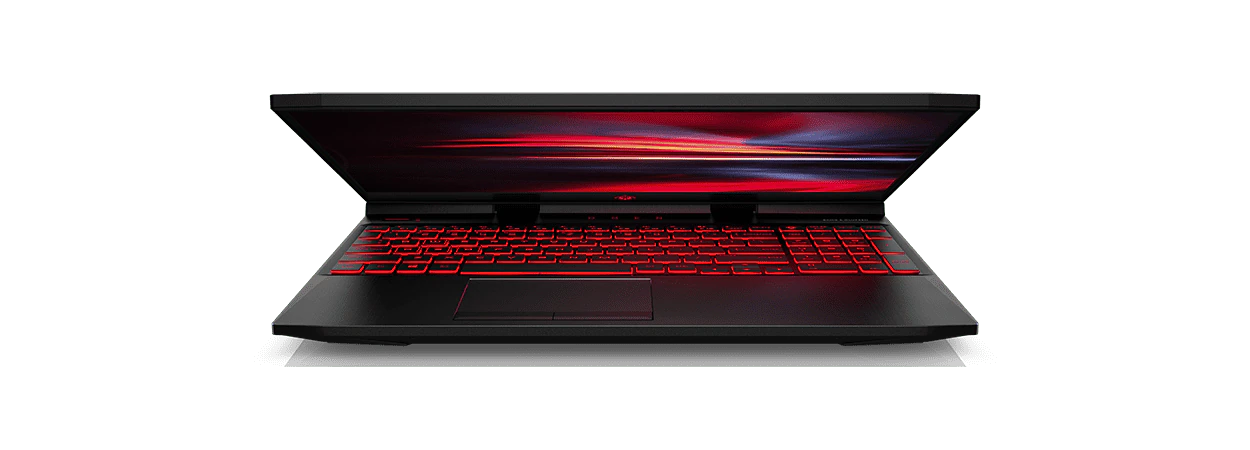Thank you for visiting the HONG KONG HP Store
-
Contact Us
CONTACT USChat with us
- Our specialist are here to help
- Live chat
- Sales
- 85264507529(WhatsApp)
-

- Post Sales
- 85230016720(WhatsApp)
Mon-Fri 8.30am - 5.30pm
(exc. Public Holidays)
Live product demo
Store finder Locate our storesSubmit feedback We value your opinion! - Location
- My Account
Search
The Latest HP Monitors for Gamers


The gaming market is continuously evolving, and the number of gamers has grown. While finding a gaming monitor has become easier with endless choices on the market, most gamers require top-notch specifications for their needs - and at a decent price. This is where it becomes challenging, as the specifications and price range can vary depending on the type of games you want to play.
For most modern-day Triple-A games, you need to consider variable refresh rates, frame rates, lower input lag, and quicker response times. Likewise, higher-end gaming monitors also offer better bandwidth, refresh rates, and even higher resolution to provide you with an immersive gaming experience.
To help you make the best choices for seamless gameplay, let's look at the types of gaming monitors available today and the features you must consider before investing in them.
For most modern-day Triple-A games, you need to consider variable refresh rates, frame rates, lower input lag, and quicker response times. Likewise, higher-end gaming monitors also offer better bandwidth, refresh rates, and even higher resolution to provide you with an immersive gaming experience.
To help you make the best choices for seamless gameplay, let's look at the types of gaming monitors available today and the features you must consider before investing in them.
Contents
General gaming monitor features you should know
It's an exciting time for PC gamers, as choices have substantially grown with various offerings. However, when buying your next PC gaming monitor, you must consider some of the following features.
Adaptive-sync technology
Even the most tech-savvy are sometimes confused about adaptive-sync technology. So what does this technology do? Technically, the adaptive sync technology determines that a monitor's refresh cycle is synced with the desired graphic card rendering rate for each video frame.
This is common for all AAA games when rendering complex graphic scenes. Therefore, adaptive sync technology ensures maximum performance with low latency. It prevents blurring by syncing the monitor to the graphics card to control refresh rates when they vary continuously.
This is common for all AAA games when rendering complex graphic scenes. Therefore, adaptive sync technology ensures maximum performance with low latency. It prevents blurring by syncing the monitor to the graphics card to control refresh rates when they vary continuously.
Panel types
While monitors with TN panels are known to be the fastest and cheapest, they tend to have poor viewing angles. Likewise, IPS panels have greater color accuracy, but lack in response time. If you are a user seeking better contrast, then VA is your choice. However, they have slower response times compared to IPS monitors. The most expensive panels are OLED panels, which produce the most vivid colors.
Screen resolution
Over the years, multiple screen resolutions have been available for gaming, but the most popular among them is the Full HD, or FHD (1920 x 1080). But with professional gaming having a larger market, QHD (2560 x 1440) and 4K (3840 x 2160) have been in demand recently. Generally, more pixels can produce crisper and sharp images, with more details than a FHD monitor.
Modern games are evolving and focusing on realistic gameplay experiences, so to enjoy all these games, it is suggested to opt for QHD or 4K monitors, boasting superior refresh rates.
Modern games are evolving and focusing on realistic gameplay experiences, so to enjoy all these games, it is suggested to opt for QHD or 4K monitors, boasting superior refresh rates.
Frame rate or refresh rate: which is essential?
Frame rate and refresh rate are probably the terms most of us have used synonymously when speaking of graphic cards or displays. While both terminologies refer to graphics, the frame rate, commonly known as frames per second (FPS) on a monitor, is associated with how many frames the graphics card can display every second. The refresh rate, however, refers to how many times the monitor can refresh the images on your screen.
So to provide more clarity, FPS and refresh rate produce stunning visuals, but their functions vary. Refresh rates are related to your display, while FPS is confined to the processing power of your graphical processing unit (GPU).
A higher FPS results in a more fluid gaming experience and depends on the quality of your graphics card in your setup. Likewise, high refresh rates allow your monitor to renew the displayed images continuously.
But if you want to find an answer for how these terms are related, then the only link you can see is that your FPS will most likely be capped depending on the monitor's refresh rate. So, for example, if your graphics card supports a higher FPS, but your monitor is a 90 Hz monitor, you are likely to work with only 90 FPS, as going beyond the range will eventually lead to screen tearing and blurring.
So to provide more clarity, FPS and refresh rate produce stunning visuals, but their functions vary. Refresh rates are related to your display, while FPS is confined to the processing power of your graphical processing unit (GPU).
A higher FPS results in a more fluid gaming experience and depends on the quality of your graphics card in your setup. Likewise, high refresh rates allow your monitor to renew the displayed images continuously.
But if you want to find an answer for how these terms are related, then the only link you can see is that your FPS will most likely be capped depending on the monitor's refresh rate. So, for example, if your graphics card supports a higher FPS, but your monitor is a 90 Hz monitor, you are likely to work with only 90 FPS, as going beyond the range will eventually lead to screen tearing and blurring.
Ideal brightness for gaming monitors
New PC games are becoming more interactive and immersive. But to enjoy this experience, minor adjustments are needed to manage contrast, brightness, and color temperatures, allowing you to game for a prolonged period.
Most monitors have a default brightness, but it may not work for all the games. By calibrating your gaming monitor, you can achieve consistent color, with ambient lighting for those longer gaming sessions.
While you might prefer a maximum resolution for a specific game and sharper images, customizing the brightness is essential to avoid eye discomfort or straining. To get the best output from your monitor, the recommended gaming brightness setting is around 250 to 350 candela per square meter (cd/m2), while maintaining the contrast at approximately 70%.
Most monitors have a default brightness, but it may not work for all the games. By calibrating your gaming monitor, you can achieve consistent color, with ambient lighting for those longer gaming sessions.
While you might prefer a maximum resolution for a specific game and sharper images, customizing the brightness is essential to avoid eye discomfort or straining. To get the best output from your monitor, the recommended gaming brightness setting is around 250 to 350 candela per square meter (cd/m2), while maintaining the contrast at approximately 70%.
Latest HP gaming monitors
With all the basics covered, let's explore some of the latest HP gaming monitors available for all your gaming needs.
OMEN 25i Gaming FHD Monitor

The HP OMEN monitor family's great monitor boasts top features for all gamers. With provisions for mounting, this 24.5-inch monitor supports (1920 x 1080) FHD resolution.
Gamers are provided with many features, such as customizing the environment's dynamic crosshairs, upscaling older games, and having edge precision.
You won’t worry about lagging, as you can experience smooth gameplay with a 165 Hz screen with AMD FreeSync, 1 ms response time, and certified blue light filter protection.
Gamers are provided with many features, such as customizing the environment's dynamic crosshairs, upscaling older games, and having edge precision.
You won’t worry about lagging, as you can experience smooth gameplay with a 165 Hz screen with AMD FreeSync, 1 ms response time, and certified blue light filter protection.
HP X24ih Gaming Monitor

HP X24ih is among the highest-selling gaming monitors in the market. This monitor provides ample features such as FHD resolution, on-screen controls, and low blue light mode for those with a budget constraint. You can also enjoy a longer duration of gaming due to an anti-glare screen and 1ms response time, including a 144 Hz refresh rate. The monitor has AMD FreeSync technology, providing a lag-free gaming experience.
HP X27 FHD Gaming Monitor

Another gaming monitor at the top of the line is the HP X27. This monitor has a 27-inch screen, FHD resolution support, an adjustable stand, and adaptive sync, and it has gaming console compatibility. With a blazing fast 165 Hz refresh rate and 1ms response time, you are guaranteed to have a great experience with high-definition gaming. There is also a maximum brightness of 400 nits and a contrast ratio of 1000:1 to provide accurate and vivid colors.
HP 38c 37.5-inch Curved Display

This 37.5-inch monitor is well suited for gaming and multimedia purposes. You are offered a curved display, with an LED backlight and support for a resolution of 3840 x 1600 at 60 Hz. The monitor offers anti-glare, in-plane switching, on-screen controls and plug and play provisions. There is optimized pixel density with a 21:9 aspect ratio offering a large viewing area. For professional gamers, this monitor might work as a dual display setup, providing a natural field of vision with a 2300 mm radius.
Summary
When looking for the best gaming monitors, many choices on the market may overwhelm some. You may consider many things, between your budget, screen quality, functionality, features, and the type of gaming you are looking for. At the same time, it becomes challenging to keep up with all the new products in the market and determine the best for you.
And that is precisely why we have got your back with a well-curated list to help you pick the best and the latest gaming monitor available today.
About the Author: Kaushik Das is a contributing writer for HP Tech Takes.
And that is precisely why we have got your back with a well-curated list to help you pick the best and the latest gaming monitor available today.
About the Author: Kaushik Das is a contributing writer for HP Tech Takes.
CONTACT US
Chat with us
- Our specialist are here to help
- Live chat
- Sales
- 85264507529(WhatsApp)
-

- Post Sales
- 85230016720(WhatsApp)
Mon-Fri 8.30am - 5.30pm
(exc. Public Holidays)
Live product demo
Store finder
Locate our stores
Submit feedback
We value your opinion!









